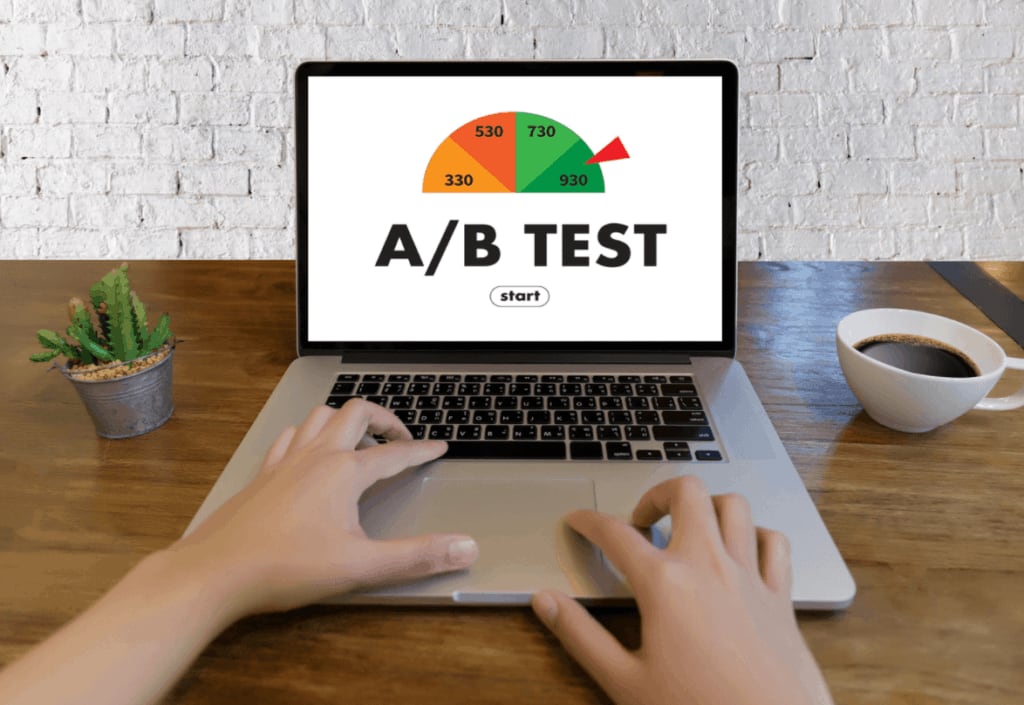The Power of A/B Testing: Increase Your Email Open and Click-Through Rates
Do you want to know the power of A/B testing? Read this article to know the best way to increase your email open, and CTR.

Email marketing is one of the most effective ways to reach out to customers and promote products or services. However, sending an email is not enough. You need to ensure that the email you send is opened and clicked by the recipient.
That’s where A/B testing comes in. A/B testing is a powerful technique that can help you increase your email open and click-through rates.
In this article, we’ll take a closer look at what A/B testing is and how you can use it to improve your email marketing campaigns.
Table of Content
- What is A/B testing?
- Why A/B testing is important for email marketing?
- How to conduct A/B testing?
- A/B testing best practices for email marketing
- Conclusion
What is A/B Testing?
A/B testing is a technique that involves sending two versions of an email (version A and version B) to a sample group of subscribers. The two versions are identical except for one variable, such as the subject line, sender name, or call-to-action. The response rates for each version are then measured and compared to determine which version performed better.
A/B testing is a powerful tool that can help you optimize your email campaigns and improve your overall results. It allows you to test different elements of your emails and identify the most effective strategies for your audience.
By continually testing and optimizing your campaigns, you can increase your email open and click-through rates, and ultimately, your conversion rates.
Why A/B Testing is Important for Email Marketing
Email marketing is a highly competitive space. With the average person receiving dozens of emails each day, it can be challenging to get your message noticed. That’s why it’s essential to use A/B testing to improve your email open and click-through rates.

By testing different elements of your emails, you can find the strategies that resonate best with your audience and increase your chances of getting your message seen and acted upon.
Here are some of the benefits of A/B testing for email marketing:
1. It Helps You Understand Your Audience
A/B testing allows you to test different elements of your emails and see which ones resonate best with your audience. By understanding what your audience likes and responds to, you can create more effective campaigns and improve your overall results.
2. It Helps You Optimize Your Campaigns
A/B testing allows you to optimize your campaigns by identifying the most effective strategies for your audience. By continually testing and refining your campaigns, you can increase your email open and click-through rates, and ultimately, your conversion rates.
3. It Helps You Increase Your ROI
By improving your email open and click-through rates, A/B testing can help you increase your return on investment (ROI) for your email marketing campaigns. By continually testing and optimizing your campaigns, you can improve your results and get more out of your investment.
How to Conduct A/B Testing?
Now that you understand the importance of A/B testing for email marketing, let’s take a closer look at how to conduct A/B testing for your campaigns.
Here are the steps you need to follow:
Step 1: Identify What to Test
The first step in A/B testing is to identify what you want to test. This could be the subject line, sender name, call-to-action, or any other element of your email.

Start by identifying the elements that are most important to your campaign and that you believe could have the biggest impact on your results.
Step 2: Define Your Sample Size
Once you’ve identified what you want to test, you need to define your sample size. Your sample size should be large enough to provide statistically significant results but small enough that you don’t risk harming your campaign if the test doesn’t perform well.
A sample size of around 10-20% of your total list is typically a good starting point.
Step 3: Create Your Variations
Once you’ve defined your sample size, it’s time to create your variations. This involves creating two versions of your email that are identical except for the variable you want to test.
For example, if you want to test the subject line, you could create one version of the email with a question in the subject line and another version with a statement. Make sure to create your variations in a way that allows you to measure the impact of the variable you’re testing.
Step 4: Split Your List and Send the Emails
With your variations created, it’s time to split your list and send the emails. Randomly divide your sample group into two equal parts and send each version of the email to one-half of the group.
Make sure to send the emails at the same time to ensure that external factors, such as time of day, don’t affect your results.
Step 5: Measure Your Results
Once you’ve sent your emails, it’s time to measure your results. Track the open and click-through rates for each version of the email and compare them to determine which version performed better.

If your results are statistically significant, you can conclude that the variable you tested had a significant impact on your results.
Step 6: Apply What You’ve Learned
With your results in hand, it’s time to apply what you’ve learned. Use the insights you’ve gained to optimize your future email campaigns and improve your overall results.
Keep in mind that A/B testing is an ongoing process, so make sure to continue testing and refining your campaigns to maximize your results.
A/B Testing Best Practices for Email Marketing
While A/B testing is a powerful technique, it’s important to follow best practices to ensure that you get the most out of your testing efforts. Here are some best practices to follow when conducting A/B testing in email marketing:
1. Test One Variable at a Time
To ensure that you get accurate results, it’s important to test one variable at a time. This allows you to isolate the impact of each variable and determine which ones have the biggest impact on your results.
2. Use a Large Enough Sample Size
Your sample size should be large enough to provide statistically significant results but small enough that you don’t risk harming your campaign if the test doesn’t perform well. A sample size of around 10-20% of your total list is typically a good starting point.
3. Test Regularly
A/B testing should be an ongoing process. Regular testing allows you to continually optimize your campaigns and improve your results.
4. Track Your Results
It’s important to track your results carefully and measure the impact of each test. This allows you to understand what works and what doesn’t and make informed decisions about how to optimize your campaigns.
5. Apply What You’ve Learned

With your results in hand, it’s important to apply what you’ve learned. Use the insights you’ve gained to optimize your future email campaigns and improve your overall results.
Conclusion
A/B testing is a powerful technique that can help you increase your email open and click-through rates. By testing different elements of your emails, you can find the strategies that resonate best with your audience and improve your chances of getting your message seen and acted upon.
Follow best practices for A/B testing to ensure that you get the most out of your testing efforts and continually optimize your campaigns. With regular testing and optimization, you can increase your email marketing ROI and achieve your marketing goals.
About the Creator
Raymond McNatt
I've spent over 10 years honing my ability to captivate readers with my words. My specialization in email marketing and digital marketing niches has led to the publication of numerous articles, and essays, in various publications.
Enjoyed the story? Support the Creator.
Subscribe for free to receive all their stories in your feed. You could also pledge your support or give them a one-off tip, letting them know you appreciate their work.






Comments
There are no comments for this story
Be the first to respond and start the conversation.